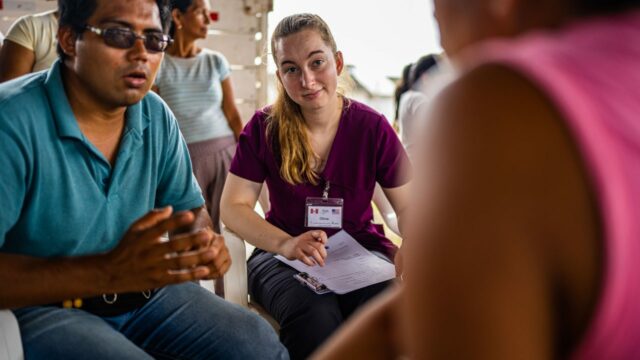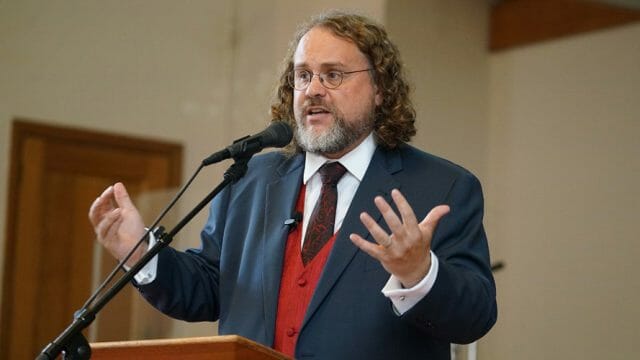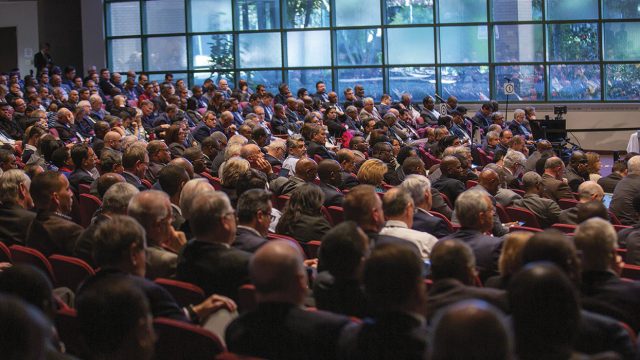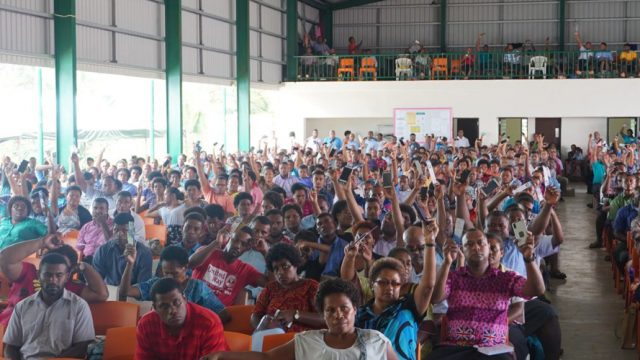Religious liberty leader explains how to approach the topic with confidence in the future.
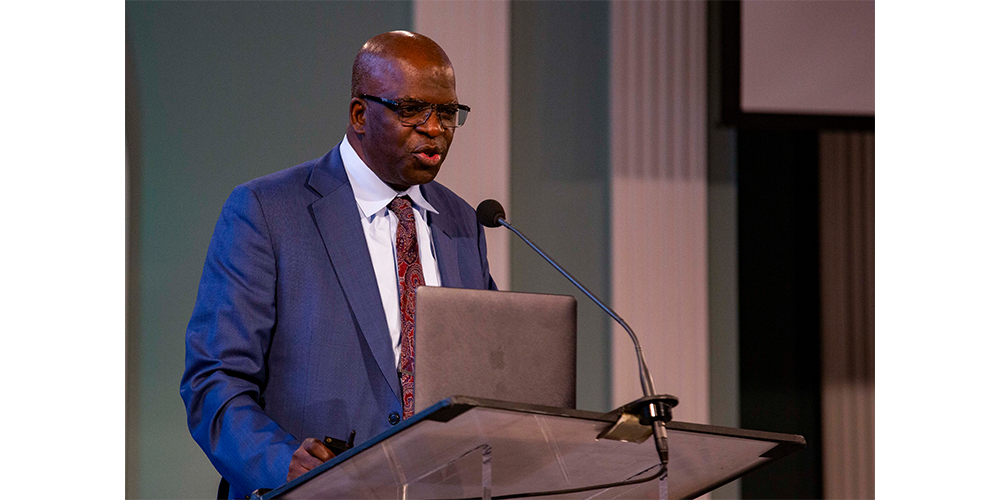
For us as Seventh-day Adventist Christians, a central tenet of our theology is the three angels’ message found in Revelation 14. In light of current world events, many Adventists are experiencing feelings of fear, doubt, or discouragement toward the end times.
Recognizing this, the Adventist Church’s Public Affairs and Religious Liberty director, Ganoune Diop, gave a special presentation at the 2021 Annual Council on October 13, 2021. He challenged church members to assess their theological misconceptions and reframe Revelation as a message of hope, rather than weaponizing it as one of judgment or fear.
“God has raised the Seventh-day Adventist movement to bring a message of hope to the whole world before the second coming of Jesus Christ!” Diop said.
He began his presentation by outlining the current global state of affairs, including the COVID-19 health crisis. Diop also referred to the climate crisis, global economic and geopolitical crises, and migration and displacement crises. He also mentioned racism, discrimination, crimes against humanity, food insecurity, and water shortages. While this outline affirmed that it is natural for people to be afraid, he made it clear that fear shouldn’t be part of it.
“These crises are something we can go through, confident that Jesus is with us,” he said. “This is why He says to the church of Philadelphia in Revelation 3:10, ‘I will keep you from the hour of trial.’ There is also another cosmic crisis . . . expressed in the book of Revelation through apocalyptic language, but in the New Testament through plain language,” he added.
Focusing then on the “cosmic crisis” unfolding in Revelation chapter 5, Diop highlighted how Jesus — the Lion of Judah and the Lamb that was slain — is the only one worthy to open the scroll (verse 5). Further, the symbolism of the Lamb having “seven horns and seven eyes” (verse 6) indicates Jesus’ omnipotence and omniscience. This truth should give us hope.
“Here we see there is worship and praises of celebration because the Lamb has conquered!” Diop emphasized. “Salvation includes the reversal of despair, resolution of the cosmic crisis, restoration of God’s kingdom, restitution of priestly dignity and function, the reinstatement of kings, and the reunion of our cosmic family.”
AC21 – Ganoune Diop – Revelation 14, Pulse of Seventh-day Adventist Identity, Mission, and Message from The Adventist Church on Vimeo.
Diop said that understanding the hope embedded in chapter 5 should inform our understanding of chapter 14 — what he describes as the “heart of Revelation.”
“Even a cursory assessment of its context reveals the following themes,” he began. “Creation, redemption, judgment, the defeat of Satan, the demise of persecutors and oppressors of God’s people, a blessing from Jesus and the Holy Spirit, the protection and sealing of God’s people, the commandments of God . . . an eschatological exodus, judgment, a day of atonement, even the final feast of tabernacles. All this in Revelation 14 alone!”
Expanding on some of these themes, Diop explained how all of this is couched in a message of hope. “There is joy in this chapter! It’s the first vision of the 144,000 celebration! This proves that God’s mission will succeed; redemption will be for all nations, tribes, and peoples! We need not be afraid.”
He then warned viewers how adopting an attitude of fear can warp Adventist theology, eschatology, and behavior, especially around hot topics like the mark of the beast or the seal of God, causing Adventists to become unloving and judgmental.
“Those who confuse future events with current reality dismiss relationships with other Christians, for example, as unnecessary and useless. They conflate other Christians with future enemies and act as if their destiny is already sealed, and further, that the mark of the beast is already fixed on those who don’t keep the biblical [Saturday] Sabbath. This fundamental hermeneutical fallacy clouds their thinking as to faith, hope, and love.”
Ellen White’s consistent teaching on the mark of the beast makes the situation very clear, according to Diop. By highlighting Ellen White passages in Evangelism (p. 234) and Testimonies for the Church (vol. 5, p. 216) , Diop emphasized that everything he was saying is “really deeply about the sovereignty and sufficiency, and the sealing and sanctifying activities of God,” and that attempting to earn our salvation or predict the future goes against this principle.
“When the angels cast from heaven invaded planet earth, they came here to sabotage and dehumanize people created in the image of God,” he said. “The Spirit of God does the opposite. In the end times, the demons will use any means to sever the bond between God and those created in God’s image.”
Satan’s motivation to sever this bond between Christ and his followers is strong, as Revelation 12 and 13 tell us. “Satan determined to destroy Christ and thus prevent salvation from becoming a reality, to eradicate all signs from pointing to Christ,” Diop said.
He added, “Revelation 13 describes how Satan pursues Christians through persecution and deception and even succeeds in defeating many — the martyrs of Revelation 13:7. In chapter 13, Satan uses political and religious entities to make them his allies, to persecute and alienate the saints, and produce counterfeit trinities and entities trying to mimic and usurp God’s authority.”
Diop encouraged viewers that, despite these difficulties, if the bond between Christ and his followers is strong, Satan has no power. By developing a personal relationship with Christ and focusing on Him wholeheartedly, he said, the distractions — whether on a small scale or in the global, geopolitical arena — can be muted and fear eradicated.
“Regardless of the circumstances, we can bring a message of hope, but not only that. We must also believe this message,” Diop emphasized. “There is more to Revelation 14 than meets the eye. May we all as Adventists go throughout all the world and share that hope is coming — and that Jesus is our hope.”
The original version of this story was posted on Adventist News Network.


